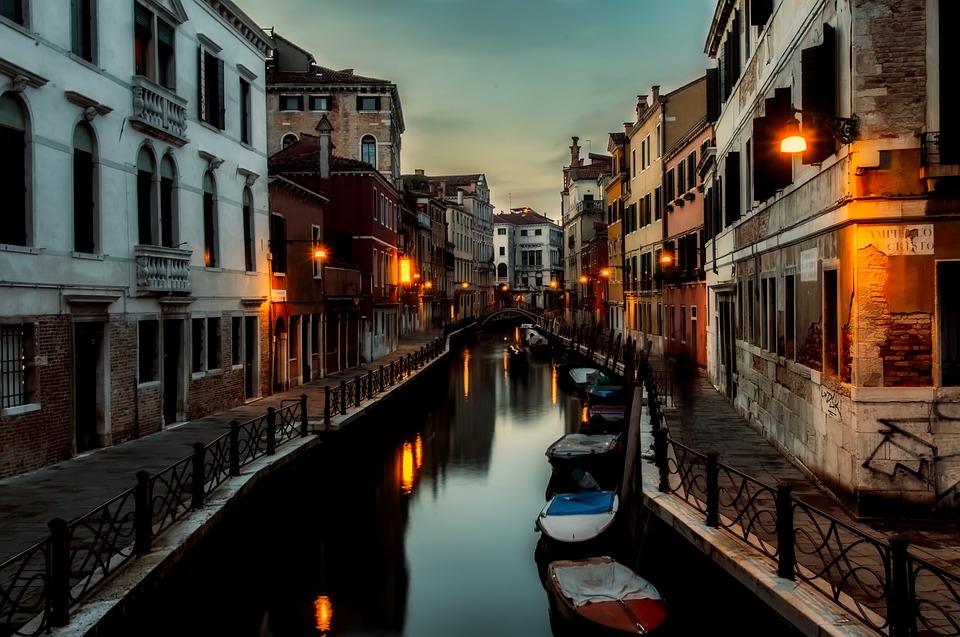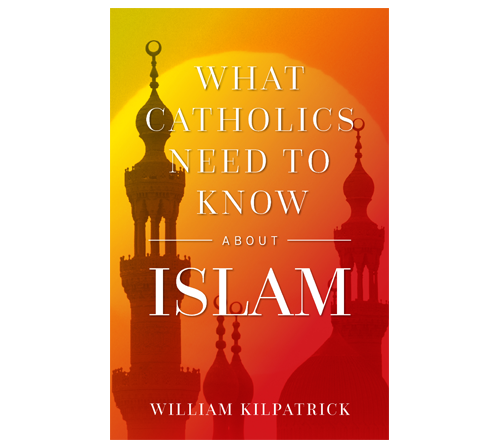Thomas Mann’s Death in Venice is a story of moral infection set against the background of a cholera epidemic. The celebrated novella contains several lessons for our own times.
Gustav von Aschenbach, the protagonist of the story, is a highly respected German writer on vacation at a resort hotel in Venice shortly after the turn of the 19th century.
Among the guests at the hotel is an exceptionally beautiful 14-year-old Polish boy named Tadzio, who is accompanied by his mother and sisters. Aschenbach’s interest in the boy is at first aesthetic and Platonic, but it quickly becomes obsessive, and before long, the middle-aged writer abandons his art and his dignity in pursuit of his passion for a boy who scarcely knows he exists.
But Aschenbach is not the only one who is in decline. Venice itself is portrayed as a place of deception and corruption. Unknown to most of the visitors, a deadly cholera epidemic is spreading through the city. But city authorities and hotel owners hush it up in order to protect the tourist trade.
When Aschenbach learns of the plague, he first considers taking the moral course. He will warn the boy’s family to flee the city. But this noble intention is soon discarded and he decides to keep the information to himself lest Tadzio’s departure put an end to his fantasies. In the end, Tadzio and his family safely depart for home, while Aschenbach succumbs to the cholera, and departs to another world.
Reading Death in Venice, it’s hard to ignore the parallels with the situation in the Church today. One can’t help but notice that the current epidemic has hit Italy — the home of the Church — particularly hard. The pictures of an emptied-out St. Peter’s Square that we see in the news are reminiscent of the empty streets and squares portrayed in Mann’s cholera-ridden Venice.
Moreover, in recent years the Church has been plagued by scandals that have led to a weakening of faith, a drop-off in vocations, and the closing of numerous churches. Like the aging Aschenbach, the Church seems to have entered a period of decline. And one of the chief causes of the decline is that many in the clergy have succumbed to the same temptation that grips Aschenbach. For Aschenbach, this is not simply a sexual temptation, but also a crisis of vocation. In fact, much of the novella consists of his meditations on the artistic vocation. Up until Venice, Aschenbach had sacrificed himself to his writing, practicing self-discipline, and spending long hours mastering form and expression. Moreover, he scrupulously aimed at a “moral resolution” to his novels and condemned all forms of “moral shilly shallying.”
Once in Venice, however, he succumbs to the more languid and relaxed pace of life, and also to a more relaxed sense of morality. Under the influence of sun and sea and Tadzio, he foregoes his disciplined vocation in order to pursue his “vague, lawless hopes.” He exchanges his abstemious “life in the bonds of art” for a Dionysian pursuit of emotional intoxication.
Something similar seems to have happened to a not insignificant number of priests, bishops and cardinals. Archbishop Vigano’s testimony speaks of a gay mafia in the Vatican, while French journalist Frederic Martel portrays the Vatican as a gay colony — a place where it is not uncommon for clergy to seek out “rent boys” at the main train station in Rome. Martel has been criticized for exaggeration and bias, but if only a fraction of what he says is true, then Rome is in a sorry state.
The priestly vocation is, if anything, quite a bit more demanding than the artist’s vocation. It requires even more discipline and self-sacrifice than the writer’s profession. Consequently, it is not surprising that priests, like Aschenbach, are subject to strong temptations to give up the struggle. Moreover, because the priest represents Christ, he is specially targeted by Satan. However, the temptation is less likely to take hold without the presence of a tempting milieu: a supporting structure of ideas, colleagues, and cultural trends — all conspiring to assure him that he need not deprive himself.
In Aschenbach’s case, the “pagan” atmosphere of Venice provides the justification for giving in to his Dionysian impulses. In addition, the chaos brought on by the plague intensifies the lawless climate. In a Dionysian dream, Aschenbach is drawn into an orgiastic pagan revel not unlike the one described in the Bacchae.
A similar neo-pagan atmosphere developed in the West in the 1960s and 70s, although few at the time recognized its pagan nature. The neo-pagan sexual revolution didn’t invent any new sins, but it gave a semi-official stamp of approval to the old ones — fornication, adultery, abortion and homosexuality — with the result that they became more acceptable and more common. It was a kind of madness, but it was so widespread that no one dared called it madness. And, as David Carlin points out in a recent piece, American Catholics “went along with this madness.” So, to a great extent, did the Church. Doctrines remained unchanged, but few priests and bishops were willing to speak out against the sexual revolution.
Under Pope John Paul II and Pope Benedict XVI, an attempt was made to roll back the gains made by the sexual revolutionaries in the Church. But under Francis, a new sympathy for the old non-judgmental ideas opened up. In the name of compassion and diversity, the Church was asked to revisit its teachings on marriage, homosexuality and even gender. Interestingly, much of the agitation for a further loosening of sexual standards came from aging German bishops and theologians who, like Aschenbach — that other aging German — were perhaps hoping to recapture their youth.
Quite a lot has been written in the last few years about chaos in the Church. The sense that things have spun out of control is not only the result of the abuse scandals, but also of the setting of new priorities (the environment, the needs of sexual minorities, the new opening to socialism and communism), combined with a shift of focus from individual sins to corporate sins (such as sins against the environment).
To add to the chaos, several Church leaders developed a sudden interest in paganism. And, as might have been predicted, they saw paganism not as an enemy to be resisted, but as a new and much needed form of diversity. With the coming of the Amazon Synod, pantheistic ideas found their way into Church documents, and Pachamama found her way into the Vatican Gardens.
Some have suggested that the chaos in the Church may have been deliberate. When chaos rules, the old rules and certainties no longer hold, and everything seems up for grabs. Chaos presents an opportunity to push forward new rituals and even new moralities.
And this is exactly how Aschenbach comes to view the epidemic in Venice. He looks forward to “the boons” that the chaos of a plague-infested city might confer: “it seemed at times to Aschenbach that death and fear together might clear the island of all other souls and leave him there alone with him he coveted.”
The thing that prevents this from happening is Tadzio’s watchful family. Aschenbach senses that the constant proximity of Tadzio’s mother, sisters and governess is meant to keep people like him at a distance. So, partly because of the protective embrace of a well-governed family, Tadzio’s innocence is preserved.
It is disturbing then, that in today’s Church, so little attention is focused on “traditional” families of the type Tadzio enjoyed, and so much attention is focused on the needs of LGBT and other alternative types of families. Those who are “differently” oriented need to be “accompanied,” we are told. But in what direction? The destination is never specified. But judging by the people who are now in charge of marriage and family affairs, we can’t afford to be too hopeful. Why, for instance, was Cardinal Kevin Farrell, one-time roommate of former Cardinal Theodore McCarrick, one-time collaborator with the notorious Marcial Maciel, and strong proponent of the LGBT agenda, appointed to organize the World Meeting of Families in Dublin? And why was Archbishop Vincenzo Paglia, who commissioned for his church a giant homoerotic mural in which he appears in a nude embrace with another man, appointed to direct the John Paul II Institute for Marriage and Family Sciences? What sort of scientifically-planned family arrangements do Farrell and Paglia have in mind? Family life of the child-protective sort is exactly what today’s LGBT-friendly prelates — whether intentionally or not — are likely to undermine.
Every attempt to expand the definition of marriage and family represents a weakening of their true meaning and purpose. In Death in Venice, the narrator observes:
Passion is like a crime: it does not thrive on the established order … it welcomes every blow dealt the bourgeois structure, every weakening of the social fabric, because therein it feels a sure hope of its own advantage.
In short, before Church and civil authorities start tearing down fences, they should understand why the fences were put up in the first place.
Finally, we come to the matter of deception. Death in Venice is a tale of deceptions and illusions. Early on in the story, Aschenbach is appalled by an older man who dresses like a young man and even applies rouge to his cheeks in order to blend in with a younger crowd; yet in the final scenes, Aschenbach does the same thing in order to impress Tadzio. He dresses in foppish clothes, has his hair dyed, and his cheeks reddened, but only manages to look the part of an old fool.
But the major deception in the novel concerns the epidemic. The authorities and business owners do everything to cover it up. They conduct business as usual and assure the doubtful that everything is under control. This, of course, has its counterpart in the response of Church authorities to the sexual abuse epidemic. At first, they denied the abuse. Next, elaborate measures were taken to cover up for the abusers. Finally, it was decided that the root cause of the abuse was not homosexuality, but something called “clericalism.” After decades of turmoil and tragedy, we are asked to believe that the abuse was the result of an organizational breakdown, not a breakdown of morality.
We all look forward to the day when the COVID-19 epidemic will be over and we can return to normal. But it would be a mistake for the Church to return to normal, if by normal we mean the state of affairs that prevailed before the epidemic struck. Looking back from some point in the future, I think it will be seen as a time of illusion and deception.
In Death in Venice, Aschenbach dies, still in the grip of his illusion. The COVID-19 contagion is a time of trial, but it is also a time for seeing clearly and for shaking off illusions. It’s also an opportunity for replacing self-absorption with self-giving. Hopefully, many in the Church will seize the opportunity.
This article originally appeared in the April 6, 2020 edition of LifeSite News.
Pictured above: Venice at night
Photo credit: Pixabay


